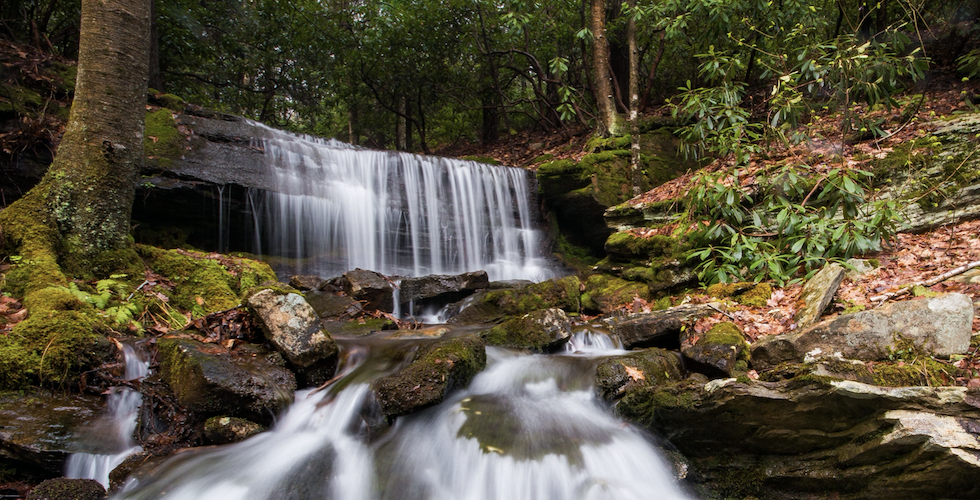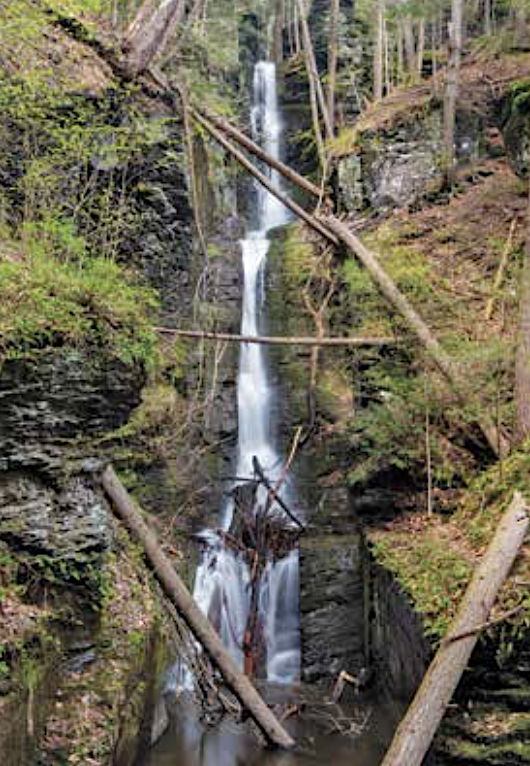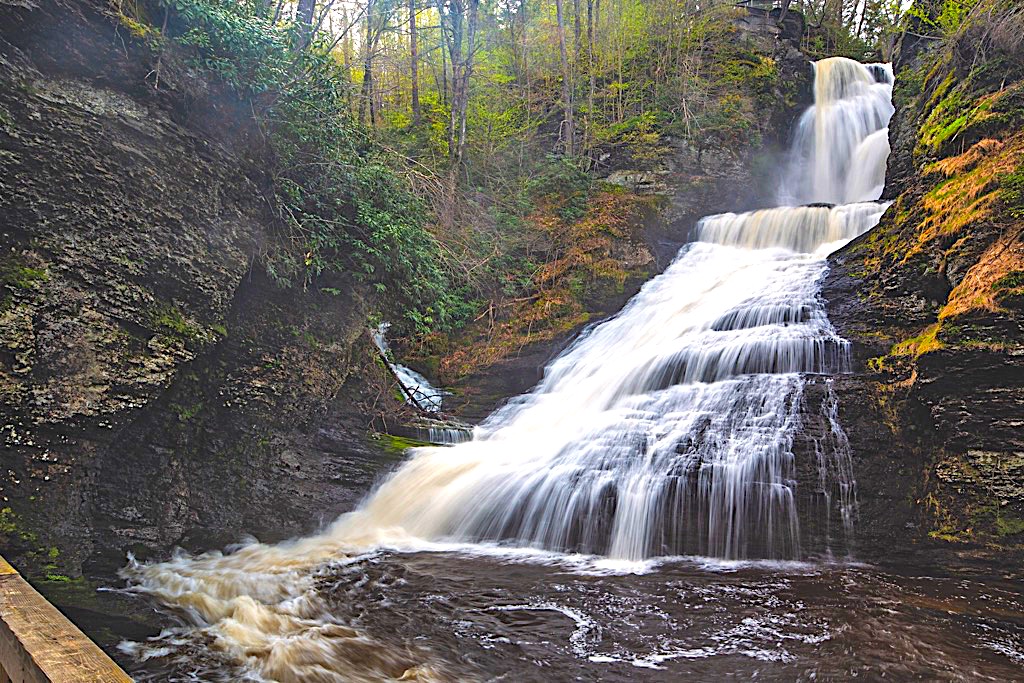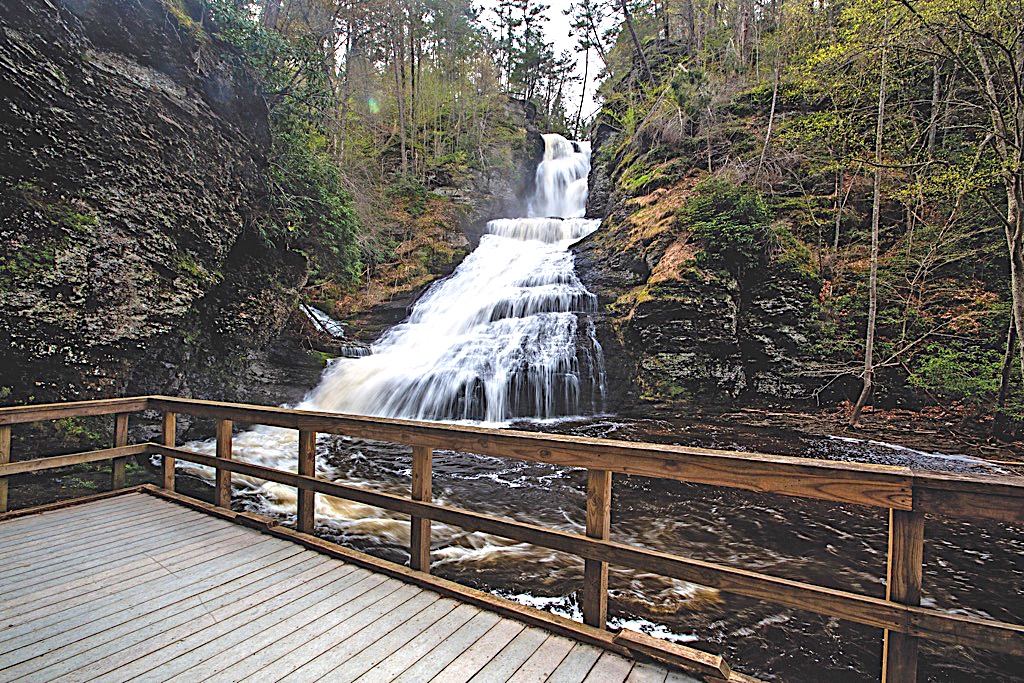
Dingmans Falls: The second-tallest waterfall in Pennsylvania is located along a handicapped-accessible trail

Dingmans Falls, the second-tallest waterfall in Pennsylvania, is also one of the few waterfalls in the state that is handicapped accessible. Don’t miss the impressive Silverthread Falls, which you pass along your way to Dingmans Falls.
From the parking area, take the boardwalk adjacent to the restrooms. After about 0.1 mile, you’ll come to the 80-foot Silverthread Falls. This waterfall has carved an amazingly thin channel through the bedrock and is an impressive waterfall in its own right.
After enjoying Silverthread Falls, continue on the boardwalk. it passes through a beautiful forest for another 0.25 mile before turning into a crushed-gravel path for the last 0.1 mile to the base of Dingmans Falls.
A viewing platform gives you a great head-on look at this incredible waterfall.
If you have time, take the staircase next to the viewing platform, which takes you on a path leading to the top of Dingmans Falls for even more impressive views.

It’s worth noting that while you can drive up to the parking area during the warmer months of the year, the last mile of roadway from US 209 isn’t maintained in the winter. The waterfall area isn’t closed, but you’ll have to walk the road for 1.1 miles to access the falls after the first major snowstorm of the year through midspring.
Good to Know
Of all the natural sites you can visit throughout Pennsylvania, none change more than the state’s waterfalls. Not only do they change based on the season, but they can also look different from day to day, depending on the flow of water. This means that no two visits are the same.

Typically, the best time to visit waterfalls is in the spring, when melting snow and increased rain ensure that the waterfalls are flowing at full capacity.
In the summer, rain is usually less frequent; this means that there is less water to flow over the face of the falls. While some waterfalls look great during the summer months, many are mostly or completely dry. If possible, try to visit after a day or two of rain.
In the fall, water levels tend to rise, and the beautiful fall foliage of Pennsylvania can lead to some amazing shots. While the flow isn’t as consistent as it is in the spring, fall is a great season for photographing Pennsylvania’s waterfalls.
In the winter, it’s often cold enough to mostly or even completely freeze Pennsylvania’s waterfalls. Use caution if you opt to visit waterfalls during the winter, as many of the ones in this book are found after venturing down unmaintained dirt roads, and getting stuck could be dangerous or even deadly.
Pre-order your copy of Jim Cheney’s Waterfalls of Pennsylvania now! For more information, visit the author’s website.
For more information about all our travel books, sign up for our newsletter now!


